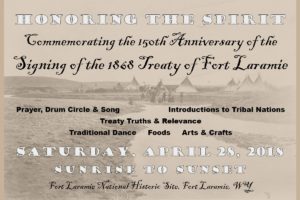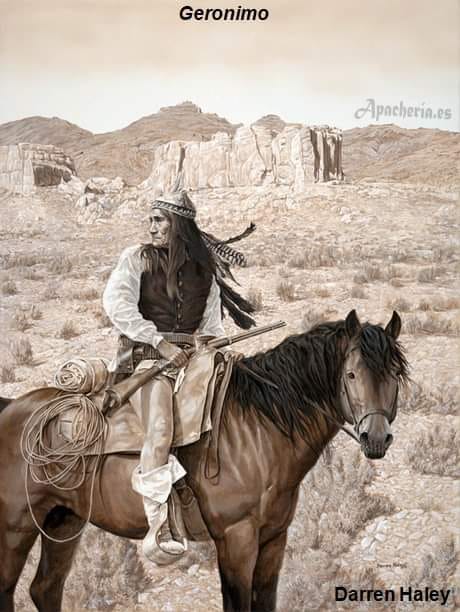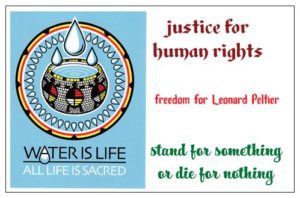april 20, 2022
State of Sequoyah
watch the video
march 25, 2020
Remembering Raymond Yellow Thunder on the 40th Anniversary of
His Death
The 40th anniversary of the day Raymond Yellow Thunder died in Gordon, Nebr., is sometime in the middle of February.
link for the report
october 18, 2019
„This is the definitive work on the Doctrine of Christian Discovery.
Please take some time to watch and share.
Many have misrepresented and misunderstood the effects and the proper response to this racist doctrine.
This film sets the record straight. Newcomb is the preeminent scholar on the subject.“
october 9, 2019

still happen in the year 2019
june 3, 2019

Canadian Inquiry Calls Killings of Indigenous Women Genocide
The New York Times Report
link for the Report
nov. 7, 2018
In 1868, Two Nations Made a Treaty, the U.S. Broke It and Plains Indian Tribes
are Still Seeking Justice
The American Indian Museum puts the 150-year-old Fort Laramie Treaty on
view in its “Nation to Nation” exhibition
Treaty of 1868
In the five generations since the treaty was signed and broken, the Sioux Nations
have steadily lost reservation lands to white development. (Paul Morigi, AP Images for NMAI)
link fuer den zeitungsbericht

Read more:
https://www.smithsonianmag.com/smithsonian-institution/1868-two-nations-made-treaty-us-broke-it-and-plains-indian-tribes-are-still-seeking-justice-180970741/#HdtmkRxFWfpCpMJJ.99
Give the gift of Smithsonian magazine for only $12!
http://bit.ly/1cGUiGv
Follow us:
@SmithsonianMag on Twitter
nov. 5, 2018
150 signing of 1868 Celebration. Held at Ft. Laramie, Wyoming
These scenes come from after the onsite ceremony in the town of Ft. Laramie, Community Center.
Red Cloud remembered Video
https://youtu.be/838Ol_nF5n4
oct. 30, 2018
The 1868 Treaty of Fort Laramie
Never Honored by the United States, Goes on Public View
link fuer den Bericht
aug. 20, 2018
Die Indianer Nordamerikas – eine vergessene Tragoedie
von Rainer Grell
link fuer den Bericht
april 28 to may 1, 2018
Fort Laramie Treaty 150 years ago
Honoring the Spirit
Fort Laramie Treaties of 1868

Notes from Indian Country
1868 Fort Laramie Treaty 150 years later
By Tim Giago (Nanwica Kciji – Stands Up For Them)
April 29, 2018, marks the 150th anniversary of the Fort Laramie Treaty of 1868.
The Treaty is often the focal point for discussions among Treaty Council representatives
and other tribal members.
I often wonder how many people actually read the Treaty.
Last week Bill Means, brother of Russell, and Phil Two Eagle,
were guests on the weekly television show I and my wife Jackie produce called Oyate Today.
They were there to discuss the upcoming events that will take place at Fort Laramie in Wyoming to commemorate the historic occasion.
Means pointed to the fact that the Treaty was an agreement between two sovereign nations:
the United States and the Tribes of the Great Sioux Nation.
He said that the American people often question the validity of the 1868 Treaty because it is old, it happened too many years ago.
read more under the following link
link fuer den Zeitungsbericht
march 26, 2018
Tim Giago:
Anniversary of 1868 Treaty of Fort Laramie approaches
link fuer den Zeitungsbericht
aug. 8, 2007
USA Erklaert
Der faktische Hintergrund – freundlich erklaert
link fuer den Bericht
2017 USA Prostestantismus
Voelkermord und Seelenmord an den Indianern Nordamerikas
link fuer den Bericht DER THEOLOGE
may 30, 2012
War das Ende der Ureinwohner Nordamerikas Voelkermord?
link fuer den Bericht
may 28, 1971
Voelkermord in Amerika
Zahlen und Fakten von Marianne von Matuschka
link fuer den Zeitungsbericht ZEIT ONLINE
https://www.youtube.com/watch?v=GUeijH2sc8E
may 1886 – Geronimo Apache
In May 1886, Geronimo and Naiche led the resistance of the last group of chiricahuas.
On May 14, they were camped near Rancho Milpillas (municipality of Santa Cruz, Sonora) where cowboys discovered them. One of them rode to the camp of Captain Charles Hatfield, located next to the San Pedro River, 2’5 miles south of the Mexican border, to notify him. An hour later, Hatfield was after them with 34 soldiers of the company „D“, 4th Cavalry.
At sunset they were a few miles from the ranch when a cowboy arrived with the news that at 15:00 hours of that day, 10 Chiricahuas had taken 30 horses in the direction of the east of Santa Cruz.
At 04:30 hours on May 15, Hatfield’s detachment, guided by two Mexicans, Ramón Moreno and Xabier Méndez, followed in their tracks. The nature of the terrain meant that much of the persecution was done on foot, taking the horses from the reins. Hatfield ordered that some soldiers carry all the mounts (each soldier seven or eight), with the rest of the men moving forward. Around 09:00 hours they reached a mountain range of about 6,560 feet high, when the Mexicans climbed a ridge and discovered the Apache camp. But the Chiricahua sentry saw them, giving the alarm.
They took their weapons and moved the women and children to the rear, out of sight of the soldiers, beginning to shoot them from a distance between 195 and 300 yards away.
The two Mexican scouts saw Naiche and Geronimo use their binoculars to analyze the situation.
Hatfield being on higher ground, and after a brief exchange of shots that didn’t cause injuries, the Chiricahuas dispersed, leaving behind 21 horses, 15 saddles, blankets and food.
Geronimo would say: “We were surprised at about 09:00 in the morning; they captured all our horses (19) and our reserve of dried meat.
We lost three Apaches in that confrontation” (This statement by Geronimo is a translation failure or a memory failure since no Chiricahua man died in combat during General Miles‘ stage).
Hatfield reported the capture of 21 horses (two more than Geronimo would say) and the camp team, mistakenly believing that there were 70 Apaches in him (which would be almost twice his real number).
Hatfield decided to continue to Santa Cruz, the nearest town.
At noon, about 2’5 miles from the town, Geronimo and Naiche returned the strike back, attacking him in a spring of a narrow ravine, where they killed two men, wounded two others, and recovered their horses and supplies,
in addition to taking four more horses, one of them the Hatfield mount. Geronimo would say: “We attacked them from behind when they passed through a prairie, we killed a soldier, and we didn’t lose any warriors.
In that skirmish, we recover all our horses except three that belonged to me. ”
The confrontation happened like this: Hatfield assigned some men to guard the catches and their own horses and mules, until they returned to a level ground. Then he reorganized his small detachment into three groups.
A sergeant and 14 men walk to face any skirmish. These were preceded by a single man on horseback, and flanked by two soldiers on horseback on each side, accompanied by Moreno and Méndez. Hatfield with 12 soldiers was in charge of the soldiers‘ horses; followed by seven men driving the mule collection and the captured horses. The detachment had to go through rough terrain before reaching the relative safety of the population of Santa Cruz. Passing through a narrow canyon, the vanguard found a sufficient spring to supply the needs of men and animals, since they had been without water for more than 24 hours.
The Apaches had advanced to the detachment, observing Hatfield’s movements and taking positions on this source, anticipating that they would use it. They let the vanguard drink and move on, just like the two groups with the horses. The Apaches allowed Hatfield to drink the soldiers‘ horses, and only attacked when the last group of seven men arrived at the spring with the mule pack and the captured horses.
They opened fire from the rocks, causing fear among the soldiers when their sergeant was wounded. Both Hatfield and the last group were immobilized for half an hour, before several of the soldiers who went ahead returned and helped those left behind. This involved a heavy shooting during which a soldier was injured and died when they were going to rescue him. Hatfield ordered the others to retire. Hatfield had two dead men and two wounded sergeants, and lost his mules (carrying food and ammunition) and the Apaches recovered their horses. The captain also lost his own saddle, and three horses of the soldiers left behind in the heat of the action.



